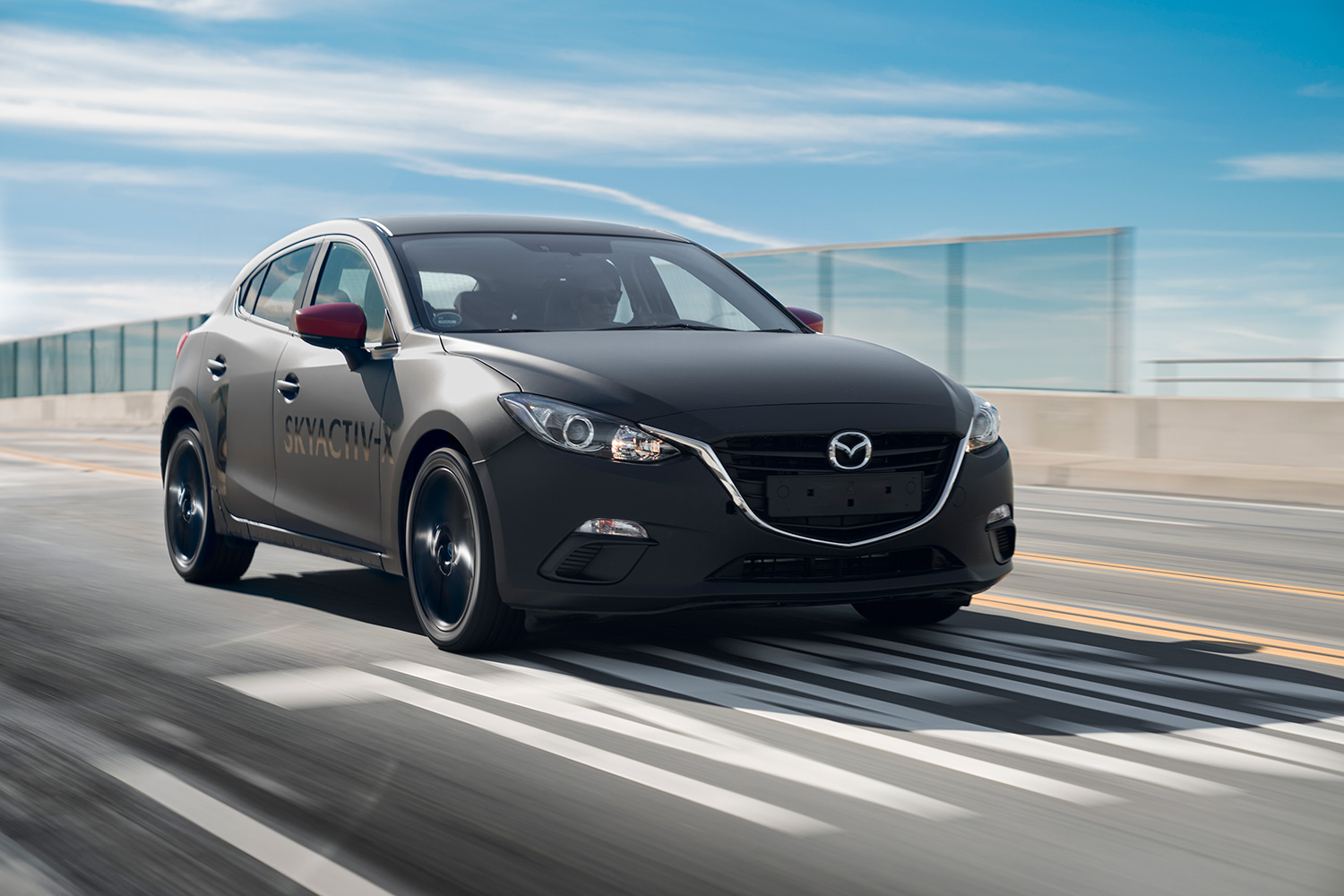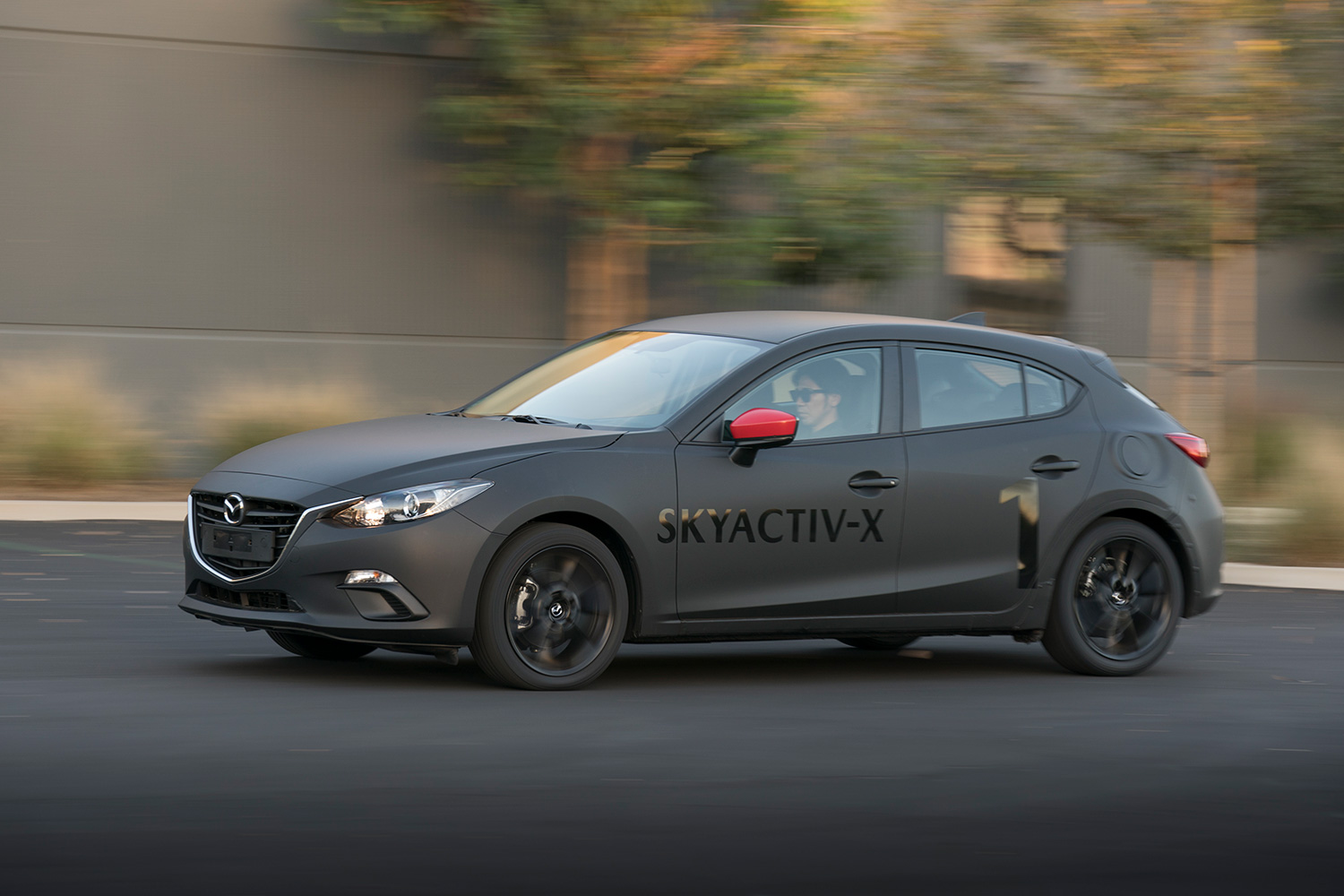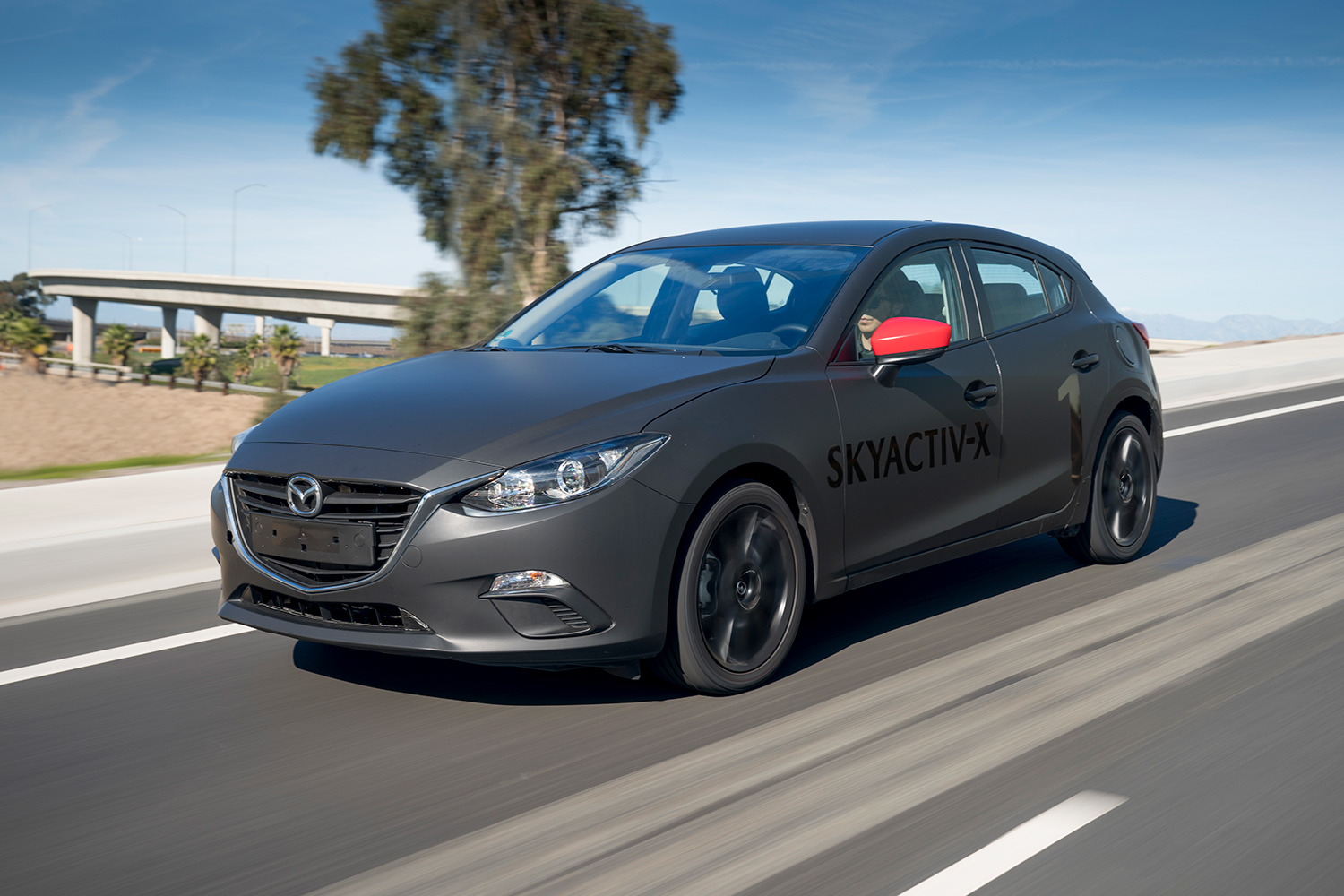With all the news around electric cars (and diesel scandals) these days, it’s tempting to think that the internal combustion engine is on the way out. After all, more than a few nations in Europe and Asia are talking about phasing out conventional gas and diesel engines entirely in the next few decades, and the list of automakers promising to hybridize their entire product lines grows every year.
In the midst of that rush to an electrified future, Mazda is staking out some contrarian ground, publicly saying what everyone else knows: the internal combustion engine is going to power the vast majority of cars for the next 50 years or so. Because of that fact, it makes sense to do as much work as possible to improve the gasoline engine today to realize maximum benefits over the next half-century.
Sustainable Zoom-Zoom 2030
Mazda calls its fuel economy and emissions development program Sustainable Zoom-Zoom 2030. The company says it will reduce complete “well-to-wheel” CO2 emissions to 50% of 2010 levels by 2030, and that systemic emissions in 2050 will be just 10% of 2010 levels.
Mazda doesn’t want to build underpowered penalty boxes that salve your conscience by murdering your driving experience.
Well-to-wheel is an important concept, because about 40% of the world’s electricity is generated by burning coal. We’re not much better in the U.S. About 30% of our electricity is comes from coal and we make another 34% by burning natural gas. Burning coal is dirty, in spite of what the coal industry claims. Coal contributes 39% of global CO2 emissions, according to National Geographic magazine. Coal plants are especially dirty in the developing world, where you find the fastest-growing automobile markets.
The bottom line is that it doesn’t matter if your electric car has no emissions if the electricity it uses comes from a dirty power plant. Furthermore, industry estimates hold that 84.4% of vehicles built between through 2050 will have some kind of combustion engine onboard, whether it’s the primary engine, part of a hybrid, or an EV range extender. Therefore, Mazda believes that improving the efficiency of gasoline engines is a critical step in reducing total systemic emissions in the transportation sector.

“If we want to reduce our CO2 footprint, we’re going to have to reduce the amount of fuel that we’re going to burn,” said Mazda powertrain engineer Jay Chen.
The Zoom-Zoom side of Sustainable Zoom-Zoom is important, too, because Mazda is serious about remaining a driver’s brand. The firm doesn’t want to build underpowered penalty boxes that salve your conscience by murdering your driving experience.
The Skyactiv idea
Mazda executives know that electrification has to come. They say so every time they stand in front of people at auto shows and events like the Mazda Tech Forum we recently attended at the company’s offices in Irvine, California. Mazda’s plans for the next decade include introducing new hybrids and electric vehicles, but because gas engines will have a huge share of the mix, it makes sense to work on improving those engines as much as possible today.
Currently, the research and development department generates immediate returns that will continue to provide ecological benefits for decades to come. That’s the basis for Mazda’s investment in new engine technology as well as chassis and transmission refinements that lead to less weight, lower aerodynamic drag, and reduced energy loss in the driveline.
Thinking outside the box
The latest result of Mazda’s development process is the Skyactiv-X engine. The feature that makes it different from the engine Mazda currently makes is Spark Controlled Compression Ignition, or SPCCI.
“Skyactiv-X is the intersection between diesel and gasoline combustion technologies,” Chen told us. “We’re making big gains through a process called lean compression ignition. We’re burning the fuel in a totally different way.”
In a conventional gasoline engine, fuel and air are mixed and then ignited at the right moment using a spark plug. The mixture is compressed at the point of ignition, but not too much. In a diesel engine, the air is compressed very tightly, and then diesel fuel is introduced at the point of maximum compression. The diesel fuel ignites spontaneously without a spark plug. The Skyactiv-X engine uses a high compression ratio similar to a diesel engine, but it’s not high enough to cause the gasoline to spontaneously ignite.
“We knew that compression ignition was our solution to getting 30% CO2 reduction,” Chen explained. “So, we thought long and hard about it, and came to a breakthrough when we realized that we could use a spark plug to control the compression ignition process.”
“In addition to reducing fuel, which is our overall goal, lean combustion also forms less emissions, mainly nitrous oxides.”
Mazda’s breakthrough has a couple of benefits. First, it allows the Skyactiv-X engine to burn considerably less fuel than a conventional gasoline engine. Less fuel going in means less pollution coming out.
“Lean combustion has a lot of benefits,” Chen continued. “In addition to reducing fuel, which is our overall goal, lean combustion also forms less emissions, mainly nitrous oxides.”
Second, the ultra-high compression ratio means the Skyactiv-X extracts more power from every stroke.
“All the energy in the fuel is extracted over a very short period,” Chen said, “and that’s a really good thing. Because it happens faster, we can get a lot more work out of it. For the same amount of fuel, we can get a much higher pressure out of our combustion process through compression ignition.”
Why didn’t this come along years ago?
Auto-makers have known about compression ignition since Rudolf Diesel invented the engine that bears his name in the 1890s. They’ve rolled out prototype compression ignition gas engines from time to time. But, until now, no brand has proposed putting such an engine into mass production. The ones that tried, like Mercedes-Benz and General Motors, have failed. The challenges of operating under widely varying circumstances have been too great. And yet, Mazda made it work.
“One of the biggest challenges with compression ignition is controlling when it happens,” Chen explained. “There’s a limited range of operation, and we have to prevent pre-ignition.”
Engine management technology has improved dramatically in the past few years. Features such as pre-ignition (knock) sensors, variable valve timing, direct fuel injection, and the computers that manage the system have all seen substantial upgrades. Until now, engine designers could never balance an engine’s operation on the knife-edge required to use compression ignition with gasoline.
Mazda plans to release the Skyactiv-X engine for 2019, likely under the hood of the next-generation Mazda3. It’s also preparing its second-generation Skyactiv body and chassis improvements and a hybrid engine option. An electric car with a rotary range extended and an updated diesel engine are slated to follow for 2020.
Driving the Skyactiv-X engine
As part of Mazda’s introduction, we drove prototype vehicles fitted with the Skyactiv-X engine on a loop that included city, country, and freeway driving to demonstrate how the four-cylinder performs under varying speed and load conditions. In its basic state of tune, the 2.0-liter Skyactiv-X generates 170 horsepower and 174 pound-feet of torque, which is roughly equivalent to the output from Mazda’s current 2.5-liter Skyactiv-G engine.
Engine load conditions and speed vary widely in the ordinary course of driving. We were able to monitor the Skyactiv-X engine’s operation in real time as it transitioned from standard spark ignition to compression ignition and even to ultra-lean operation for brief periods. The transitions were not apparent except on the prototype vehicle’s instruments.
The thing you care about is that from the driver’s perspective the Skyactiv-X engine operates exactly like any other gasoline engine. There’s no discernable difference in throttle response or power delivery. You just get in and drive like you normally would, but you’re using less fuel and putting less pollution into the atmosphere. That’s a win for Mazda, for the consumer, and for the planet.










